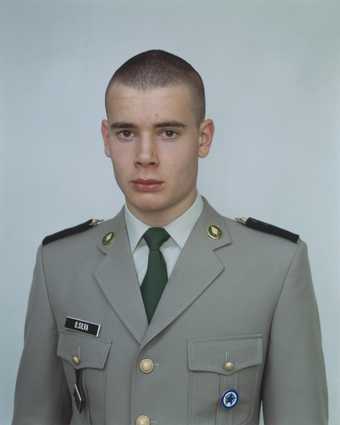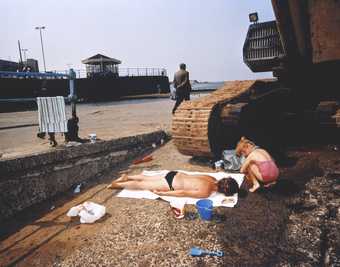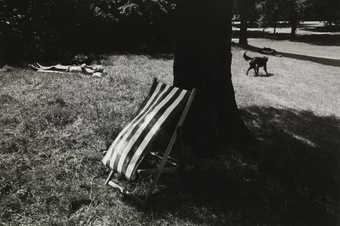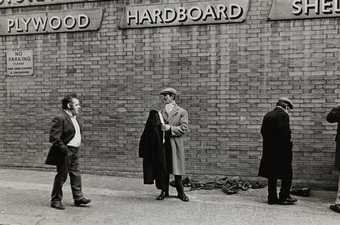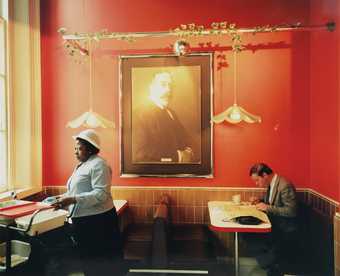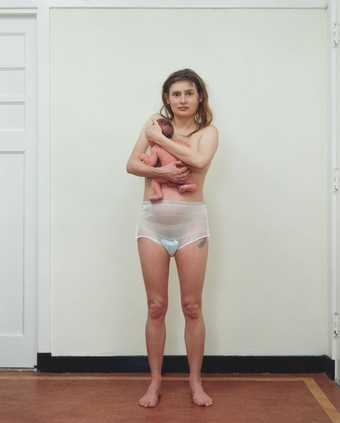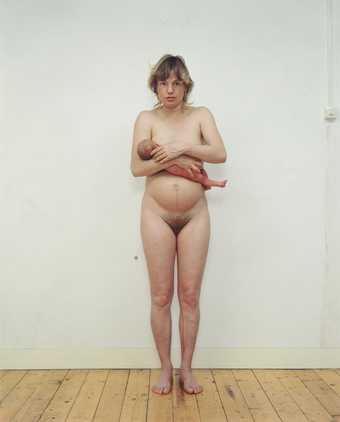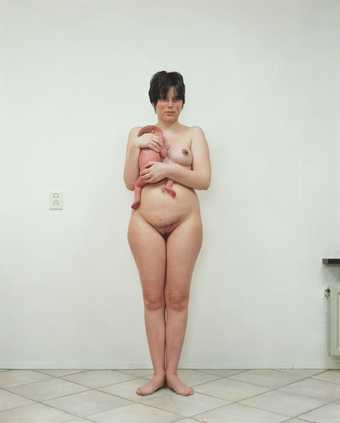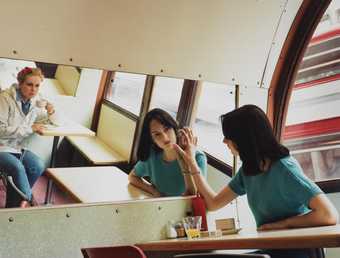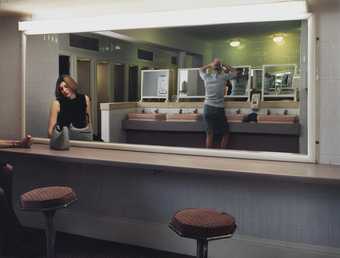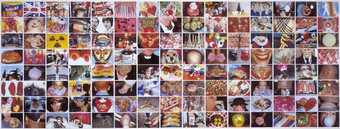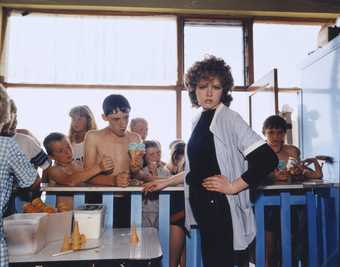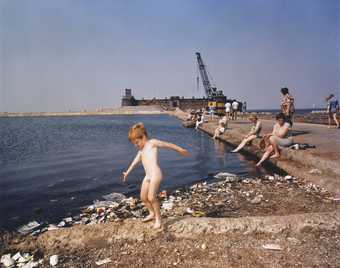
In Tate Liverpool
- Artist
- Martin Parr CBE born 1952
- Medium
- Photograph, inkjet print on paper, mounted on aluminium
- Dimensions
- Image: 1000 × 1250 mm
frame: 1055 × 1310 × 50 mm - Collection
- Tate
- Acquisition
- Purchased 2002
- Reference
- P78703
Summary
The Last Resort is a series of forty photographs taken in New Brighton, a beach suburb of Liverpool. Shot with a medium format camera and daylight flash, the photographs are an early example of Parr’s characteristic saturated colour, influenced by the American colour photography of William Eggleston (born 1939) and Garry Winogrand (1928-84). Parr printed eleven images from The Last Resort in a large-format edition of five for his 2002 retrospective at the Barbican Art Gallery, London. New Brighton, Merseyside (25) is one of four works from this special edition owned by Tate.
The photographs comprising The Last Resort were taken between 1983 and 1985, a period of economic decline in northwest England. They depict a seaside resort past its prime with attractions designed to appeal to an economically depressed working class: overcrowded beaches, video arcades, beauty competitions, tea rooms and chip shops. The series was exhibited at the Serpentine Gallery, London and published as a book in 1986, and was instrumental in establishing Parr’s reputation as a photographer. Traditionally, documentary photography in Britain sought to glorify the working class; here Parr shows a warts-and-all picture of a down-at-heel resort populated by day trippers seeking cheap thrills. The series contains many images of people dressed in the day-glo lycra fashions of the time, eating junk food in the crumbling remains of a seaside town.
In the 1980s The Last Resort was seen as an indictment of the market-led economic policies of the Conservative government led by Margaret Thatcher (Prime Minister 1979-90). Some critics understood Parr’s depiction of an area of economic deprivation and his focus on his subjects’ personal indulgences as a political statement decrying the excesses of Thatcherism. More recently, in her monograph on Parr, Val Williams has proposed a less political reading of the pictures. In her view, The Last Resort typifies Parr’s incisive eye for the eccentric. She has commented, ‘There’s no cynicism in Parr’s gaze, just interest, excitement and a real sense of the comedic’ (Williams, p.161). Parr himself has claimed, ‘I’m less interested in the fact that these people aren’t well off financially as in the fact that they have to deal with screaming kids, like anyone has to ... I’m also interested in making the photographs work on another level, showing how British society is decaying; how this once great society is falling apart’ (quoted in Williams, p.160).
This picture is dominated by a rubbish bin attached to a pillar, which is placed in the centre of the composition. The wire mesh bin is overfilled with fish and chip wrappers and soft drink cans and overflowing debris litters the ground. A young couple sits on a bench near the bin, eating chips from Styrofoam plates. The man offers a bite of his meal to their daughter, who turns away, apparently uninterested. Her pushchair is parked on piles of chip wrappers. A second child stands behind the bench eyeing the food. On the far left of the composition, an additional child sits apart from the rest of the group. The picture is cropped so that only part of this figure is visible.
The family’s obliviousness to the squalor of their surroundings is striking. The composition is primarily in red (the bench and pillar, the cola can, the butterflies on the little girl’s shoes), white (the chip wrappers, the woman’s eyelet top and the man’s shirt, the bag draped over the back of the pushchair) and blue (the woman’s trousers, the pushchair seat, the jeans worn by the man and child, cars parked in the background). These recall the three colours of the UK national flag, the Union Jack.
Further reading:
Martin Parr and Ian Walker, The Last Resort: Photographs of New Brighton, Stockport: Dewi Lewis Publishing, 1986, reproduced no.25 in colour.
Val Williams, Martin Parr, London: Phaidon, 2002, reproduced p.192 in colour.
Rachel Taylor
September 2003
Does this text contain inaccurate information or language that you feel we should improve or change? We would like to hear from you.
Explore
- architecture(30,960)
-
- townscapes / man-made features(21,603)
-
- building - non-specific(3,161)
- car park(67)
- formal qualities(12,454)
-
- photographic(4,673)
- eating and drinking(409)
-
- eating(230)
- bench(233)
- bin(30)
- poverty(153)
- urban environment(303)
- contemporary society(640)
You might like
-
Sir Don McCullin CBE Palestinian Family whose Fathers were Murdered by Christian Phalange in Karantina
1976, printed 2013 -
Rineke Dijkstra Olivier, Quartier Viénot, Marseille, November 30, 2000
2000–3, printed 2014 -
Martin Parr CBE The Last Resort 40
1983–6, printed 2018 -
Martin Parr CBE Hyde Park, London
1971 -
Martin Parr CBE Brick Lane, London
1976 -
Martin Parr CBE King’s Cross Station, London
1990 -
Rineke Dijkstra Julie, Den Haag, Netherlands, February 29 1994
1994, printed 2021 -
Rineke Dijkstra Tecla, Amsterdam, Netherlands, May 16 1994
1994, printed 2021 -
Rineke Dijkstra Saskia, Harderwijk, Netherlands, March 16 1994
1994, printed 2021 -
Hannah Starkey Untitled - May 1997
1997 -
Hannah Starkey Untitled - March 1999
1999 -
Martin Parr CBE Common Sense
1995–9 -
Hannah Starkey Butterfly Catchers
1999 -
Martin Parr CBE The Last Resort 23
1983–6, printed 2018 -
Martin Parr CBE The Last Resort 29
1983–6, printed 2002


